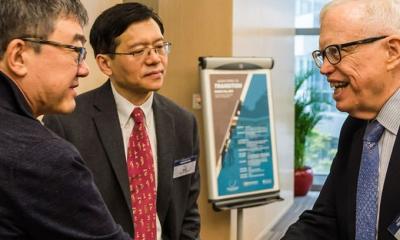
The Center for the Economics of Human Development houses a number of projects that collaborate with institutional partners from around the world.
Asia:
The Rural Education and Child Health (ChinaREACH) project, a collaboration between the Center for the Economics of Human Development, the China Development Research Foundation, and Beijing Normal University, was launched in 2015 in response to a call for evidence-based pilot-to-policy applications in China's State Council. The project evaluates the impact of a combined nutrition and parenting treatment, inspired by the seminal Jamaica Reach Up and Learn model, and delivered to at-risk families in the rural Gansu Province. The improved developmental outcomes for rural children anticipated by ChinaREACH will serve to inform national policy in China, and will stand as a flagship for global poverty efforts.
CEHD has also established a thriving research partnership with the Institute for Economic and Social Research at Jinan University, and are conducting research exploring human flourishing with a focus on empirical studies of Chinese economic and social development.
Latin America:
CEHD is providing guidance on the implementation the Saving Brains project, a Reach Up-inspired program delivered in São Paulo and Boa Vista, Brazil, led by Alexandra Brentani at the University of São Paulo. Through a partnership with UC San Diego’s Dr. Jack Gilbert, the scope of the study has expanded to consider not only cognitive and socio-emotional data, but also data on the microbiome. The microbiome has recently been shown to form a "gut-brain" axis, mediating interactions between nutrition, environmental influences, human growth, and brain development in early childhood. By collecting this data, the team can form insights with a possible additional mechanism of action through the microbiome.
Europe:
Building on the work of James Heckman (University of Chicago) and Rasmus Landersø (Rockwool Foundation), CEHD is working to examine the origins and persistence of inequality in Denmark. Policymakers have long cited Denmark’s generous welfare state as a replicable model to minimize intergenerational inequality, however, Heckman and Landersø have discovered that despite a robust welfare state, inequality and lack of social mobility still persist, and seek to understand why. The project will analyze the role of neighborhoods in creating and perpetuating inequality. The project will examine the relationship between zip codes and outcomes, and factors such as household structure and the character of the neighborhood. The project seeks to integrate the family as the unit of intergenerational mobility into the literature, and understand whether the welfare system provides a solution to intergenerational immobility, or simply appears to do so.
CEHD is also partnered with FAIR at the Norwegian School of Economics to develop and advise the Childhood Gap project. This unique, large-scale study in Norway follows three cohorts of children and parents over seven years. It will provide detailed mapping of childhood development and new causal evidence on the intergenerational transmission of inequalities in education, occupation, income, health, and well-being through survey data, paired with administrative data.
Additionally, in collaboration with Orla Doyle at University College Dublin, CEHD is working to analyze data from Preparing for Life in Ireland (PFL). This innovative study was implemented in three disadvantaged neighborhoods of North Dublin from 2008 to 2015, with the aim of improving children’s school readiness. Mothers were enrolled during pregnancy and received treatment until their child entered school. In addition to a home visiting component, PFL programming utilized the internationally-acclaimed Positive Parenting Programme (Triple P Parenting), and the Early Years Practice and Schools Programs, where educators are trained to deliver the best possible outcomes for children, and supplemented with antenatal care and education. Preliminary findings in the Early Years Programs show promising results for several methods of recognizing at-risk children, and feelings of empowerment and effectiveness during home visits, especially. Results will continue to roll out as research is finalized. The program's effects on child development outcomes and the sources of those effects will eventually be compared to analogous home visiting programs such as Reach Up and Learn in Jamaica, ChinaREACH, and Savings Brains in Brazil. By comparing and contrasting these programs, we will be able to identify the program components that are the most effective in improving outcomes for populations of varying levels of disadvantage.
US & Canada:
In partnership with UNC’s Frank Porter Graham Child Development Institute, the University of Chicago’s National Opinion Research Center, and USC’s Schaeffer Center for Health Policy and Economics, CEHD recently conducted a cost/benefit analysis of the Carolina Abecedarian Project and the Carolina Approach to Responsive Education (ABC/CARE), both of which targeted a group of disadvantaged families with children born between 1972 and 1979 in Chapel Hill, North Carolina. The randomized intervention involved center-based childcare treatment from birth through age five, and data were collected on the participants through age 35. In order to calculate the life-cycle benefit/cost ratio, auxiliary datasets were used to predict income, welfare participation, crime, and health beyond age 35.
In 2018, the same cost/benefit analysis was launched for the Perry Preschool Program, another early childhood intervention that took place in Ypsilanti, Michigan, also during the early 1960s. CEHD is cooperatively analyzing the results with HighScope, a research organization committed to equality in early childhood education through the improvement of teacher quality and student attention, to conduct follow-up efforts, digitize original data, and document original curricula.